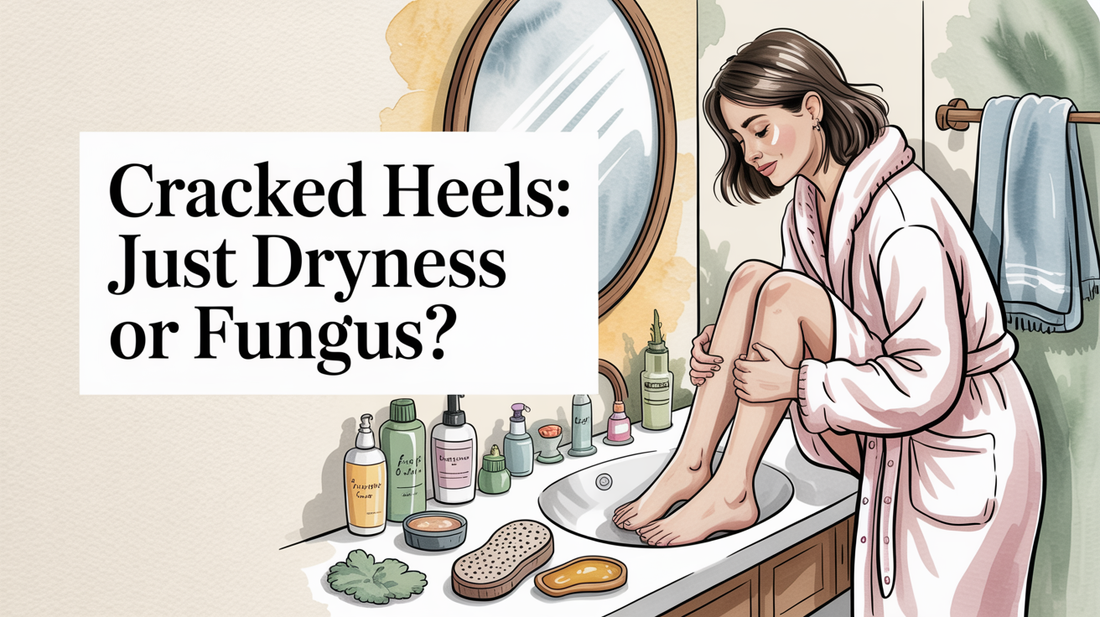Can cracked heels be a sign of fungus?
cracked heels causes, heel fissures, tinea pedis — Cracked heels can indicate various underlying issues, including dehydration or fungal infections like tinea pedis. This post will discuss the primary causes of cracked heels, including heel fissures, and provide actionable steps to manage and improve foot health. Let's explore three main areas: dryness versus infection, risk factors, and ways to repair and protect your feet.
Dryness vs infection 🧭
Cracked heels can arise from both dryness and fungal infections, each presenting distinct characteristics. Dry cracked heels usually occur due to a lack of moisture, excessive pressure, or challenging environmental factors, resulting in fissures in thick, callused skin. On the other hand, fungal infections like tinea pedis, also known as athlete's foot, can lead to cracking as well. These infections typically come with additional symptoms and necessitate different approaches to treatment.
- Dry cracked heels are often caused by dehydration, harsh weather, prolonged standing, or insufficient foot care.
- Fungal infections occur when dermatophytes thrive in warm, moist environments.
- Dry cracks are usually painless, appearing in thick callused areas, with flaky and rough skin.
- Fungal cracks may include itching, burning, redness, scaling, and even odor.
- While dry cracks are generally found on the edges of the heel, fungal infections often affect the spaces between toes and can extend to the heels.
Try It Tonight: Calm, Fresh Feet ✨
- Wash your feet with warm water and a mild cleanser, ensuring to dry them thoroughly between the toes.
- Apply a small amount of Kissable Feet where needed, and gently massage until absorbed.
- Let your skin breathe; consider wearing breathable socks if you wish. Always patch-test first if you’re new to this foot cream.
Risk factors ✨
Numerous factors can increase the risk of developing cracked heels, whether from dryness or fungal conditions. Recognizing these risk factors is essential for prevention and early detection of the underlying issues.
- Age plays a role, as skin changes associated with aging can decrease natural oil production and skin elasticity, making heels more susceptible to cracking.
- Certain medical conditions, such as diabetes or hypothyroidism, as well as circulation problems, can elevate the risk of both dry skin and fungal infections.
- Lifestyle choices, including prolonged standing, walking barefoot in public areas, or wearing ill-fitting shoes, can contribute to heel issues.
- Environmental factors, such as hot, dry climates and frequent exposure to water, can also play a significant role.
- Poor foot hygiene, including inadequate cleaning and drying—especially between the toes—creates a breeding ground for fungal growth.
Why We Recommend a Gentle Helper 🌿
Kissable Feet is specially crafted for quick absorption and delivers a soothing, non-sting experience. The nurse-crafted blend of tea tree, coconut, and calendula is designed for comfort and leaves a clean finish, making it a breeze to incorporate into your nightly routine.
- Fast-absorbing comfort with a non-greasy finish.
- A gentle sensation, ideal for sensitive, overworked feet.
- A clean, calming scent, perfect for bedtime.
Repair & protect 🔍
Addressing cracked heels effectively requires tackling the root cause, whether it’s dryness or a fungal infection. A holistic approach includes immediate relief measures along with long-term preventive strategies.
- Establish a moisturizing routine by applying thick, urea-based or glycerin-containing creams daily, especially after bathing while the skin is damp.
- Incorporate gentle exfoliation using a pumice stone or foot file on damp skin to remove dead tissue; avoid aggressive scrubbing.
- If a fungal infection is suspected, consider using over-the-counter antifungal creams or consult a healthcare provider for prescription options.
- Prioritize protective measures by wearing well-fitted, breathable shoes with good arch support and moisture-wicking socks.
- For severe cracks, signs of infection, or if you're diabetic, seek a podiatrist's evaluation, as complications can be serious.

